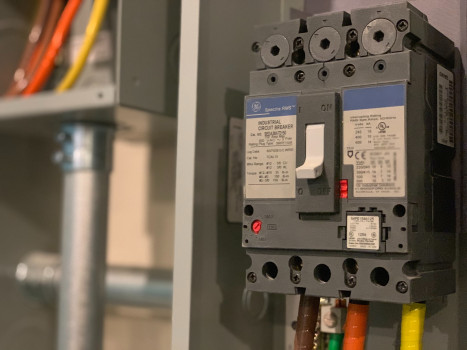Keeping safe when working with electricity
Working with electricity presents a unique set of risks to people’s safety. It is important to regularly explore the safety measures we have in place to protect people from potential harm.
Sharing and reflecting on “near miss” events - times where people or equipment could’ve been harmed - is a great way to do this. By sharing these examples and logging them in Safe@Work we all have the opportunity to learn from them.
This quarter we are looking at a working with electricity near miss event to help increase awareness of the safety measures needed when working with electricity.
Working with electricity “near miss” example
- Crews responded to an incident where an inner city high-rise building’s underground (basement) carpark was flooded.
- Upon arrival and as a part of the hazard identification process, the Officer in Charge (OIC) conducted a risk assessment and asked the power company contractor to fully isolate power to the building.
- A crew got to work in the basement, establishing a portable pump to start pumping out the flooded area.
- As more crews arrived on scene a Safety Officer was appointed and started the hazard assessment of the incident.
- The Safety Officer went to the basement where crews were operating the portable pumps and noticed that the main lights in the basement were operating and that the power was not isolated to this area. The crew exited the water and cleared people from the basement.
- They discovered the contractor had only partially isolated the power to the building.
- Another contractor from the power company arrived and correctly isolated the power to the whole building.
- Work to manage the flooding resumed.

Safety reminders from this example
- Conduct the first hazard assessment from at least 8 metres away. Be cautious. Approaching the incident too closely before understanding all of the hazards may expose personnel or others to serious electrical danger.
- Identify any other electrical hazards including anything you may be holding, (for example, ladders or any hand-held equipment) or anything you may use (for example, pressurised water or other extinguishers). Keep a safe distance away from any part of any electricity network involved, including anything in contact.
- Once the initial assessment is done all emergency services personnel must keep to the 4 metre MAD (Minimum Approach Distance) from any electrical equipment or hazard. They may approach closer than the MAD when an electricity supply industry representative has formally confirmed that the electrical equipment is safe to approach. (Referenced in the guide to electrical safety for emergency services personnel).
- In inner city high-rise buildings there is sometimes an electrical zone substation. These are often built in to blend with the environment they are in.
- Any water close to live electrical equipment can make normally safe areas dangerous. Do not approach or touch electrical equipment in floodwater; immersed equipment can have dangerous voltages.
- Communication with the electricity supply industry representative and the network company must be clear and formal.
Important to remember
- Apply at all times the Safe Person Concept and Dynamic Risk Assessments [PDF, 166 KB]. Review these regularly and incorporate them into all your drill and exercise scenarios.
- Situations can change very rapidly, and procedures are in place to manage the dynamic risks.
- Always follow your training and standard operating procedures, no matter how routine or familiar a response appears to be.
Log any Safety, Health or Wellbeing events via Safe@Work.
If you need help on how to log an event, refer to the Report workplace safety, health or wellbeing event page, or contact your Regional Safety, Health and Wellbeing Advisor.
Resources
- Working Safely Around Electricity – Learning Station Module(external link)
- IS4 Working near electrical hazards [PDF, 40 KB]
- IS4 SOPb Energy storage systems (ESS) [PDF, 139 KB]
- Electrical safety for emergency services personnel (EEA May 2015) guide [PDF, 2.4 MB]
- Feederlines: Live Power Lines Across Vehicle [PDF, 312 KB]
- Feederlines: Situational awareness [PDF, 870 KB]
- Incident response guide [PDF, 330 KB]
- Report a workplace safety, health or wellbeing event
- Safety, health and wellbeing manual
Other recent “near miss” examples:
